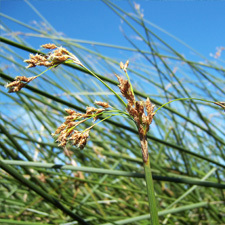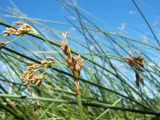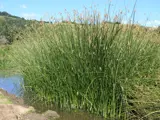 Californian bulrush
Californian bulrush
Common name: Californian bulrush
Botanical name: Schoenoplectus californicus
Management programme: Advisory
Originally from western and southern United States as well as Mexico, Central and South America.
Why is it a pest?
- Forms dense stands that suppress plants and block water courses and drains.
- Easily spread through various means including water, wind, soil machinery, animals and humans.
Where is it found?
The tidal reaches of coastal river banks, estuaries and drains.
What does it look like?
- Margin growing aquatic plant that can grow to 3-4m tall in salt water.
- Stems are bright green, rounded or triangular, and it forms dense woody, creeping underground root systems.
- Flowers are orange/brown, drooping, with clusters at the tips of stems which later turn into nut-like seeds.
What are the rules?
Advisory
Council does not enforce the control of advisory species. It is landowner/occupier responsibility to manage these pests. Council may provide advice on how to manage or control advisory species if required.
How do you get rid of it?
- Hand-pull (all year) – dispose of rhizomes by incineration, deep bury or refuse station.
- Dig-out (all year) – dispose of rhizomes by incineration, deep bury or refuse station.
- Spraying – While spraying is effective, options are limited by requirements for safe use over water.
CAUTION: When using any herbicide or pesticide, PLEASE READ THE LABEL THOROUGHLY to ensure that all instructions and directions for the purchase, use and storage of the product, are followed and adhered to.
Read more on pest control advice, information and regulations.
Images


